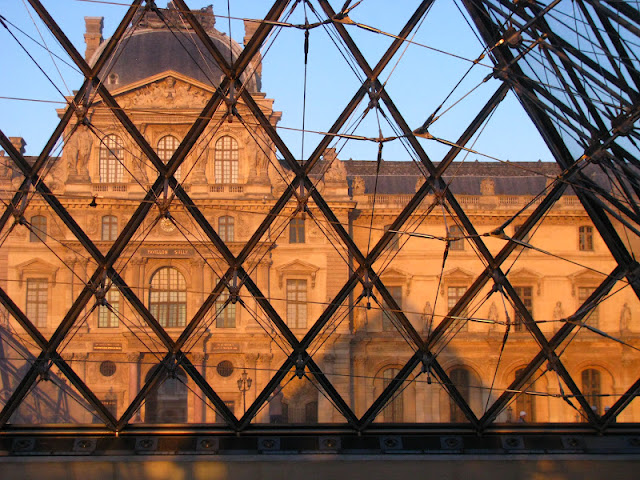Will Will Always Have Paris
Saturday, March 3, 2012
La Sainte-Chapelle
 Entry costs money, but Sainte-Chapelle is absolutely
worth seeing. I would consider the chapel having the most beautiful stained
glass windows that I have seen. In anticipation of the German invasion of
Paris, the windows were removed and, afterwards, every piece had to be individually
put in place.
Entry costs money, but Sainte-Chapelle is absolutely
worth seeing. I would consider the chapel having the most beautiful stained
glass windows that I have seen. In anticipation of the German invasion of
Paris, the windows were removed and, afterwards, every piece had to be individually
put in place. Shakespeare and Company
Île Saint-Louis
One of my favorite places
in Paris, the Île Saint-Louis is one of the two islands that the Seine forms
(the other is Île de la Cité). In recent years, the island has become quite
touristy, but I have always thought of it as a quaint neighborhood. You do not
have to spend a lot of time here, but it’s worth walking around the streets a
bit and maybe popping into some of the shops. I do suggest, however, making
time for brunch or lunch at Au Lys d'Argent, a crêperie. My parents have been to this restaurant four
times and I have been three times. You can expect the same friendly,
accommodating owner and an exceptional meal every time. Also, Maison Berthillon, an ice
cream shop, is very popular. I believe that they have locations around Paris,
but the one in the Île Saint-Louis is the flagship.
Au Lys d'Argent
90 Rue Saint Louis en l'Île
Maison Berthillon
29-31 Ruse Saint Louis en L'Île
Au Lys d'Argent
90 Rue Saint Louis en l'Île
Maison Berthillon
29-31 Ruse Saint Louis en L'Île
Jardin du Luxembourg
Place des Vosges
Le Marais
Boulevard Saint-Germain
Jardin des Tuileries
Place de la Concorde
Champs-Élysées and Arc de Triomphe
Les Invalides
Musée du Louvre
Opéra
Musée d'Orsay
Montmartre
Montparnasse
Cimetière du Père Lachaise
Château de Versailles

Restaurants
Le Petit Prince
If you are planning on splurging on one meal, make it this one. You are guaranteed a top flight French dinner. And don't skip the dessert. The photos above are at Le Petit Prince.
Restaurant Crèmerie Polidor
Polidor was featured several times in Midnight In Paris and Rachael Ray's television show. They tend to seat tourists in the back room, but it makes no difference. Order the boeuf bourguignon, which is what they are known for. You will not be disappointed.
Lys d'Argent
Lys d'Argent is best for brunch. Go with the prefix to save money.
L'As du Fallafel
Dining may be quicker than waiting in the take away line, if you are short on time. They move you in and out very quickly. A lot of food for very little money. I recommend the chicken shawarma.
Bouillon Chartier
Chartier is gorgeous inside. In past times, regular diners had their own locked boxes for their napkins. The menu is broken into many inexpensive items, so try a bit of everything.
B.I.A.
B.I.A., standing for Breakfast In America, was begun by an American movie director who missed an American breakfast while in Paris. The servers are typically American students studying at the Sorbonne. Since B.I.A. was located on the same street as our hotel, my parents and I ate here many mornings until we found a cafe with a French-styled breakfast. B.I.A. is great if you want to fill up on pancakes and the like and it is cheap. Unlike other places in Paris, you can get a full-sized coffee.
Boulangerie Eric Kayser
We went here a dozen times. If you can't find Eric Kayser, make it a point to find another really good bakery. It is an essential Parisian experience. The French have some of the best in the world.
Subscribe to:
Comments (Atom)































